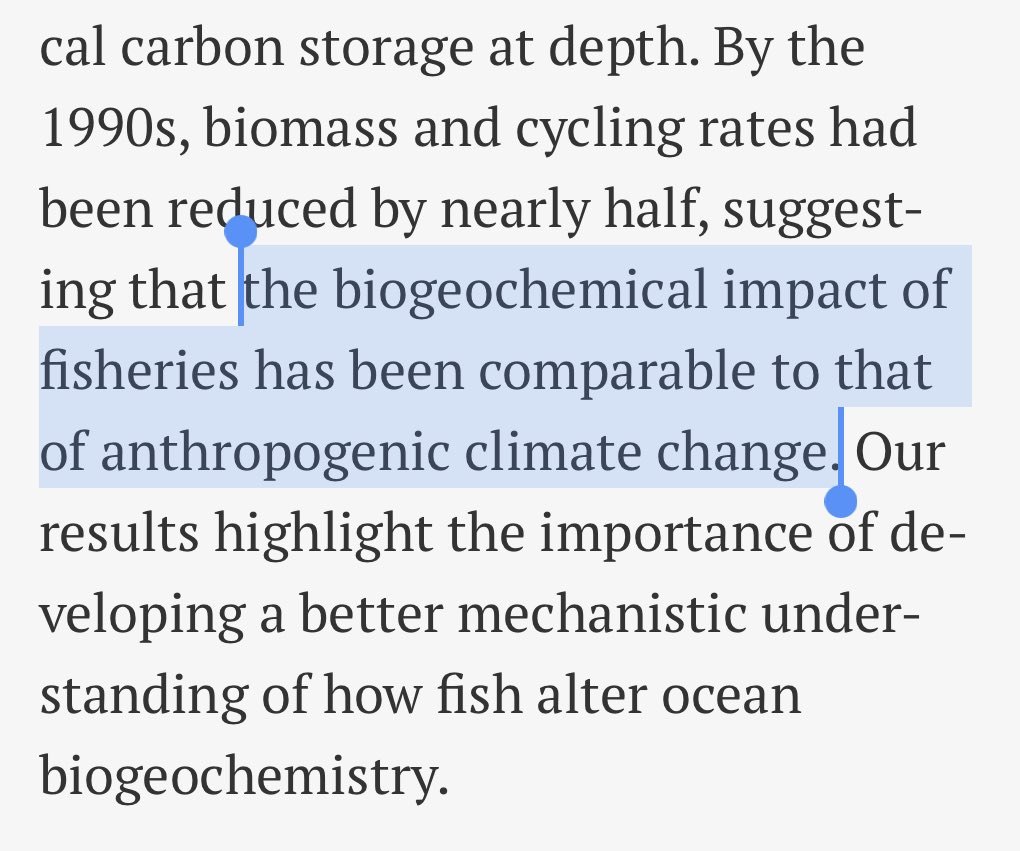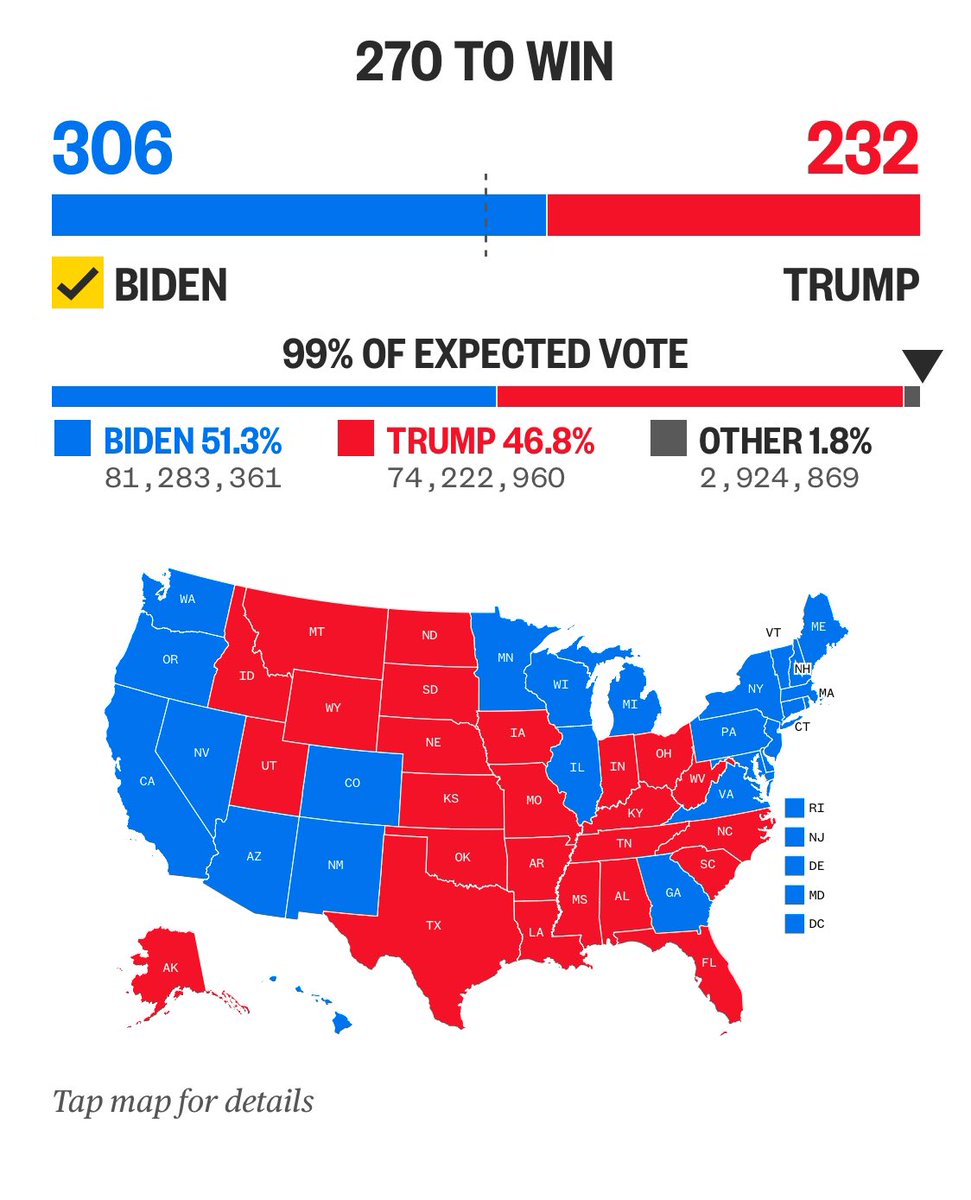WHAT KILLED THE CRABS?
The official story is something like “a billion snow crabs disappeared.”
If that sounds fishy to you, keep reading. Let’s dive into the ecology, oceanography, & geopolitical history of the Bering Sea.
A science thread on crabs, corruption, & collapse: 🦀



The official story is something like “a billion snow crabs disappeared.”
If that sounds fishy to you, keep reading. Let’s dive into the ecology, oceanography, & geopolitical history of the Bering Sea.
A science thread on crabs, corruption, & collapse: 🦀

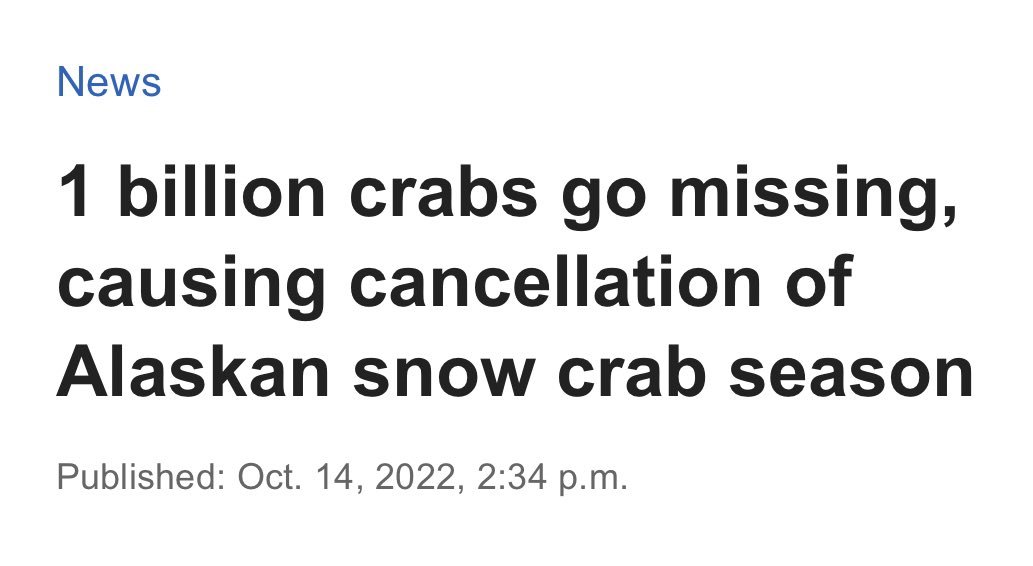
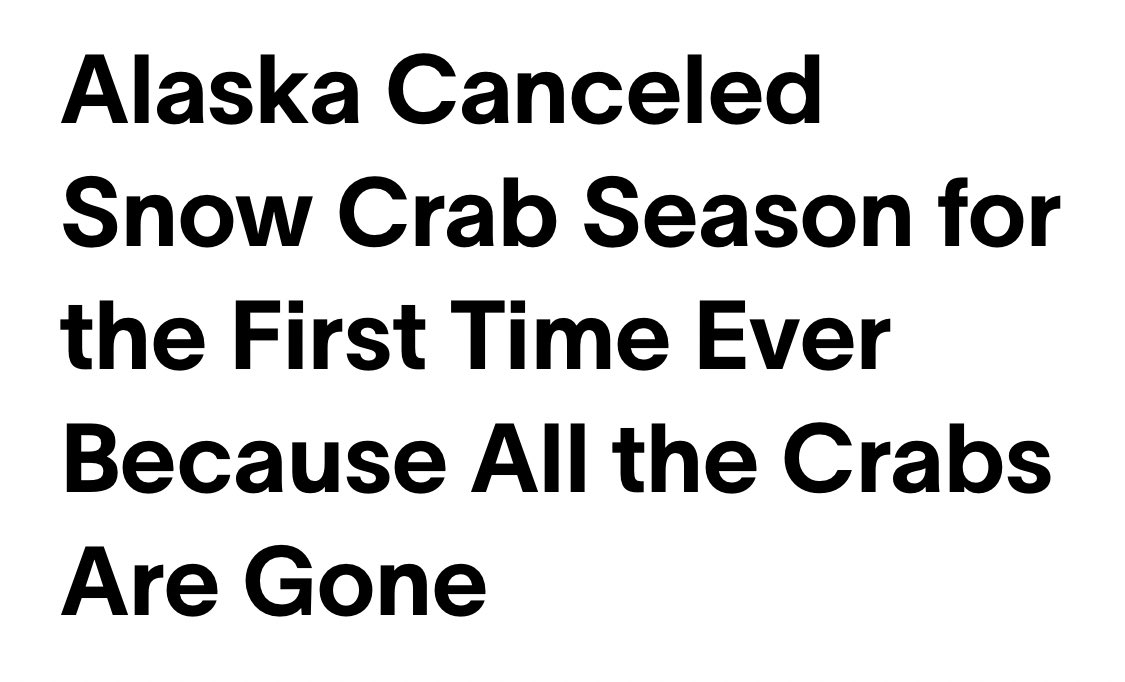
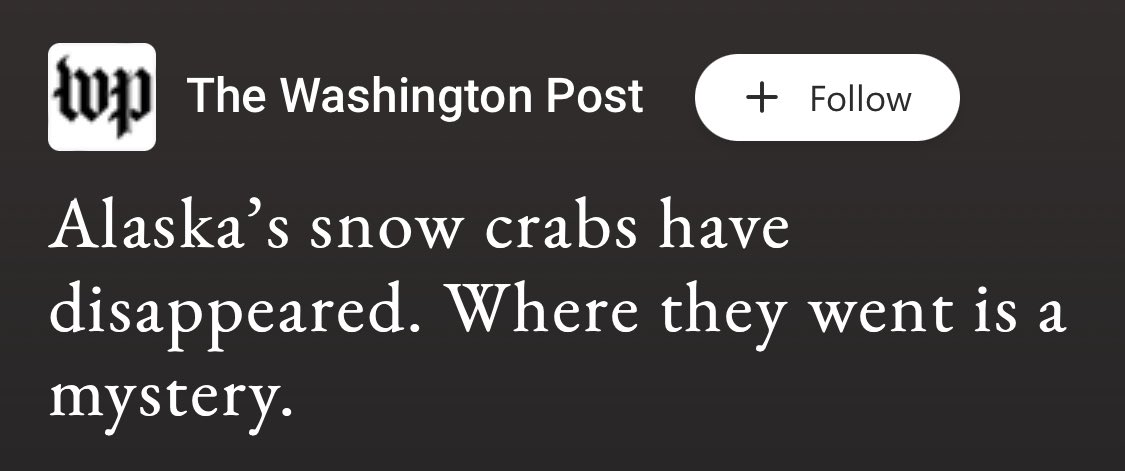
To begin, let’s differentiate the two major commercially-exploited and now crashed populations of crab in the Bering Sea: the snow and the king.
Their behavior and life histories are very different. So are their collapses. Let’s start by recounting the recent one: the snow crab.
Their behavior and life histories are very different. So are their collapses. Let’s start by recounting the recent one: the snow crab.
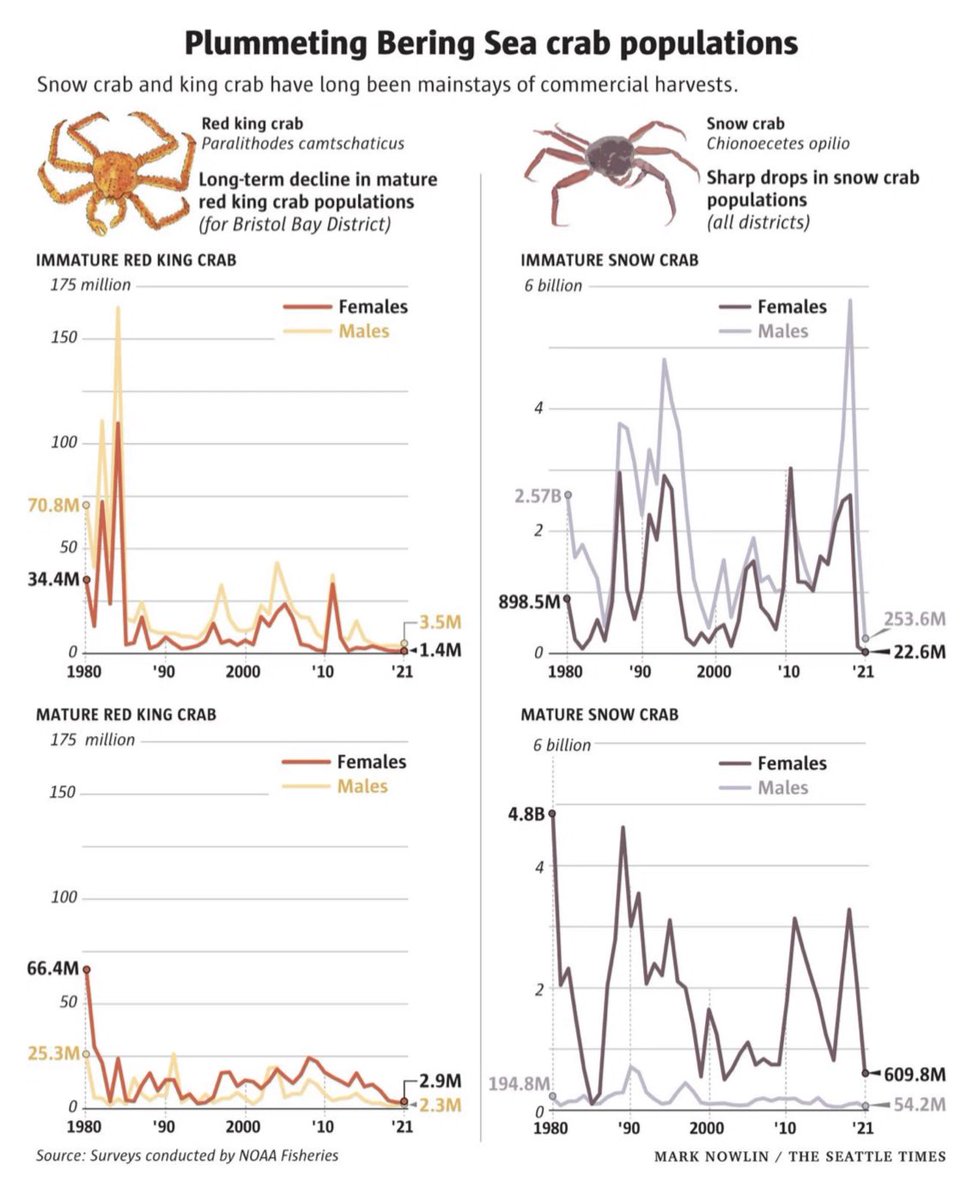
As sea ice forms in winter, salt is expelled and cold, dense water sinks to the floor of the Bering continental shelf, forming what marine ecologists call the “cold pool”. This is where young snow crabs grow up with abundant food, in water too cold for many predators… until now. 
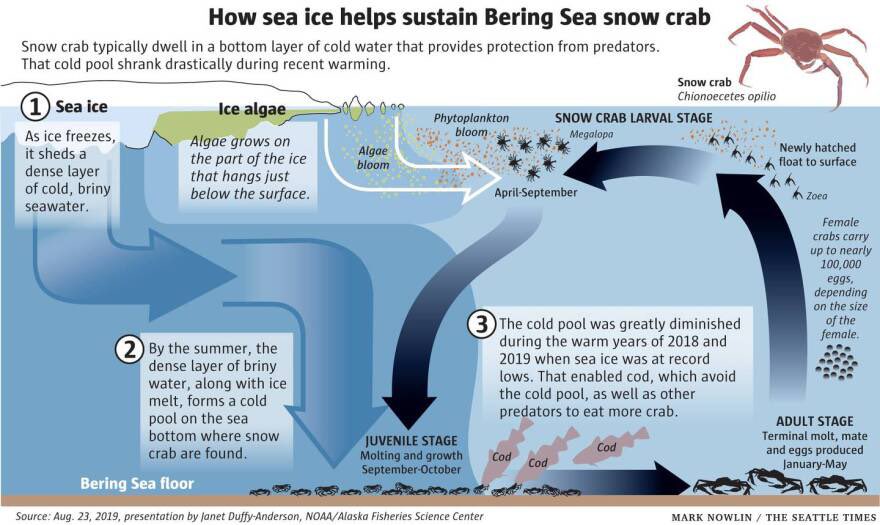
As the planet has heated, the shrinking cold pool has put snow crabs’ backs against the wall. Where once safe, juvenile crabs can be caught by predators like cod penetrating the warming water. Evidence shows the young crabs have followed the pool north.
sciencedirect.com/science/articl…
sciencedirect.com/science/articl…
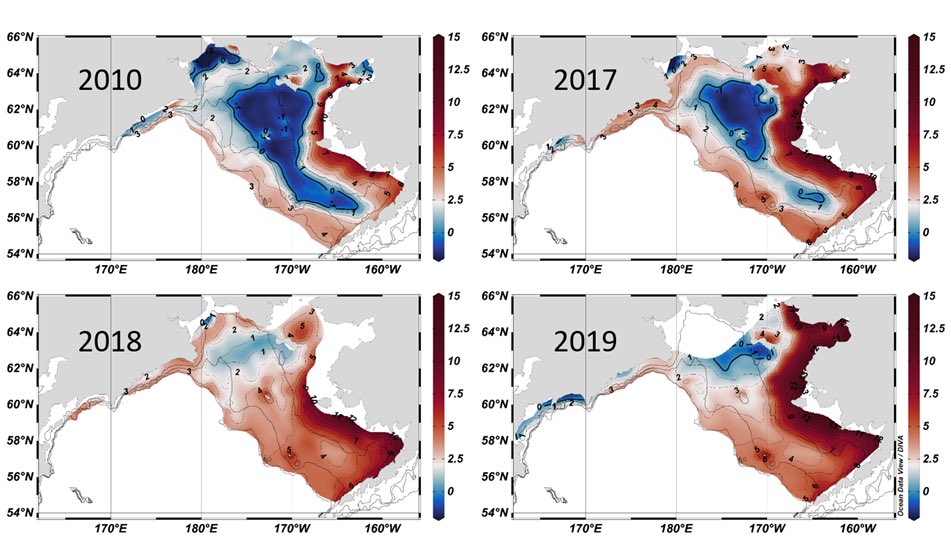
The cold pool connects the snow crab to climate collapse. But let’s not forget that on top of all these environmental factors is industrial-scale extraction and bycatch by the fishing industry. What role is this playing? We’ll come back to that.
seattletimes.com/seattle-news/v…
seattletimes.com/seattle-news/v…
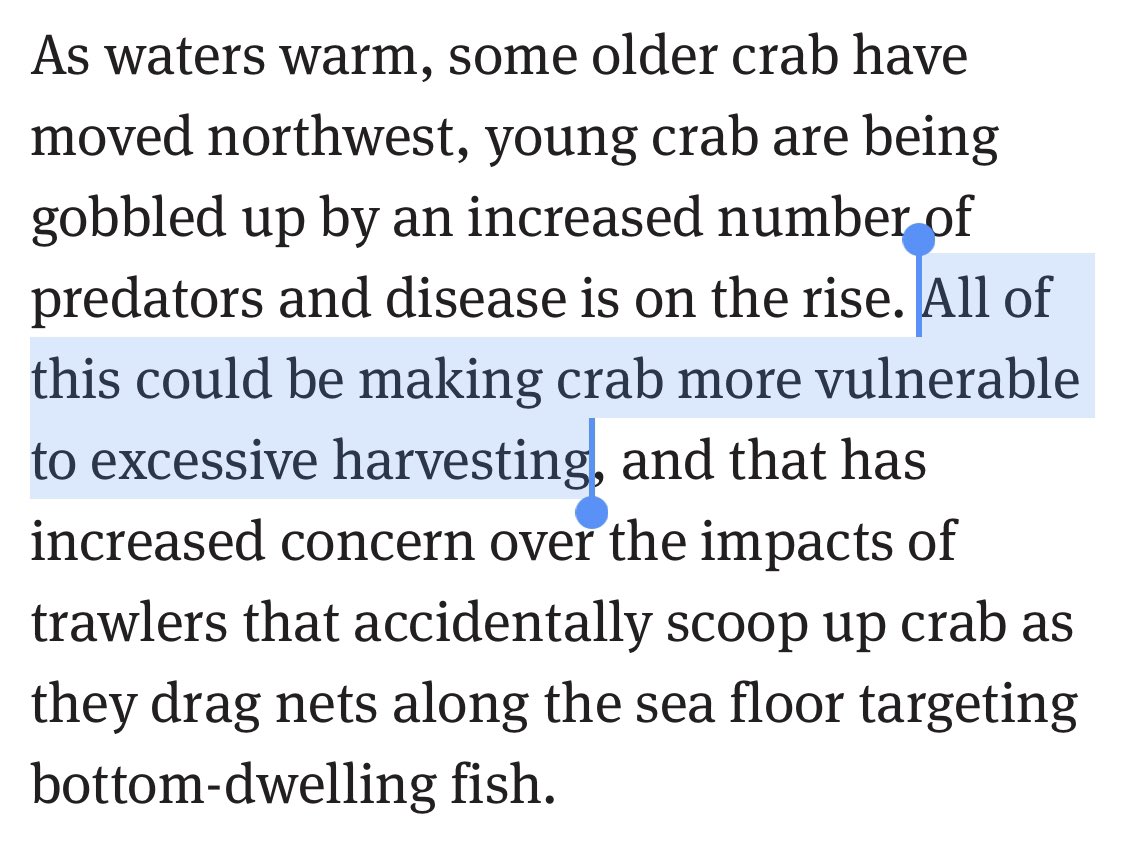
First, let’s study their counterpart: the king. King crabs once numbered in the hundreds of millions in the Bering Sea, but crashed in the early 80s and never recovered, numbering less than 10 million in recent years.
Who killed the king crab?
The story is crazy.


Who killed the king crab?
The story is crazy.
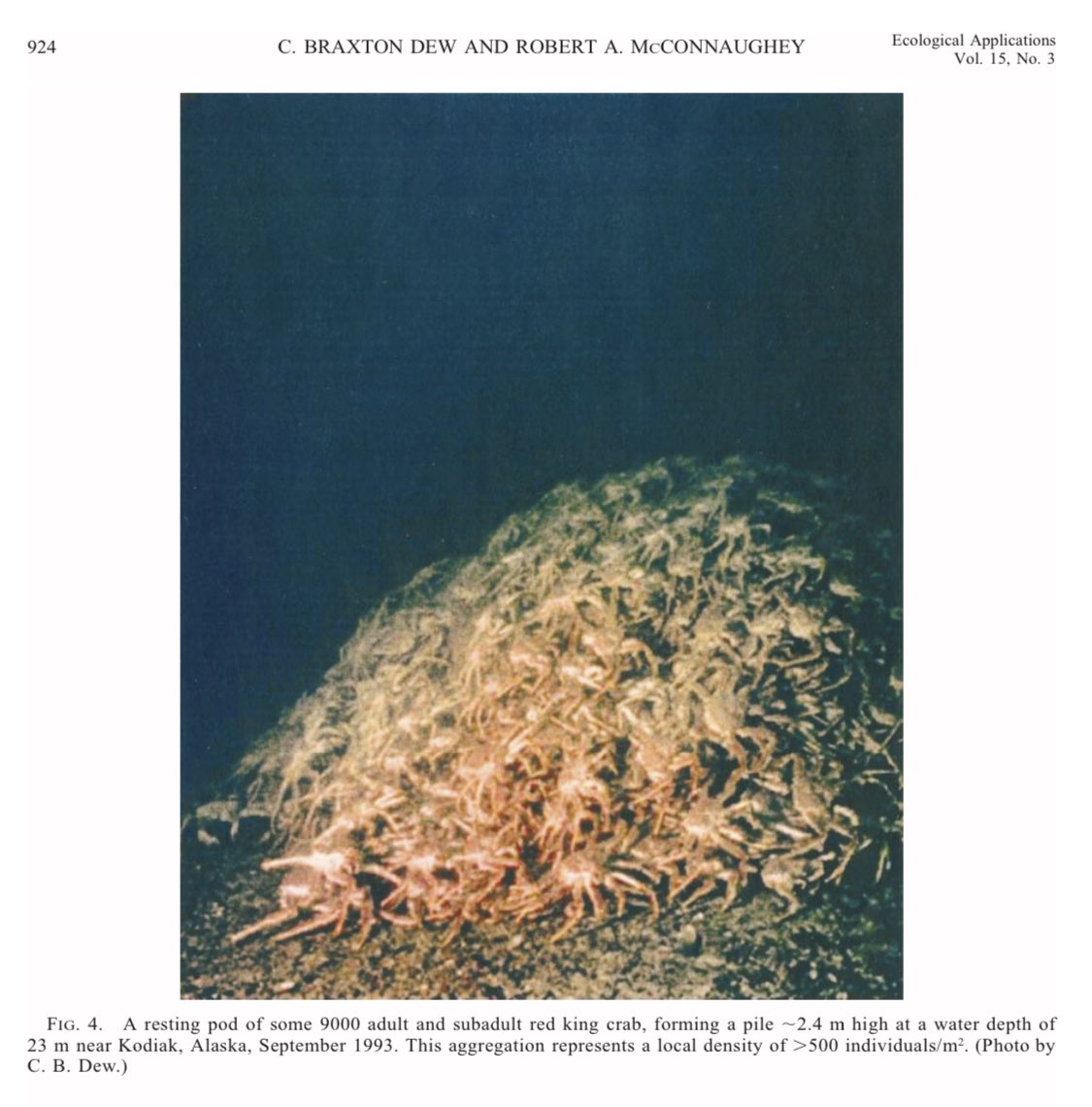
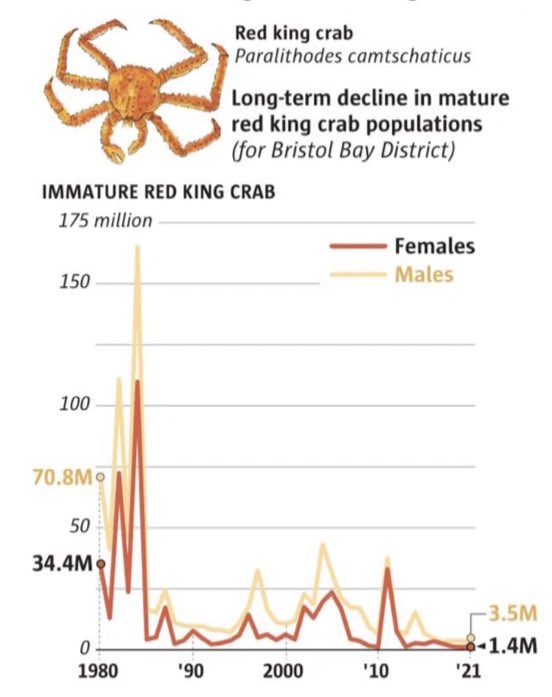
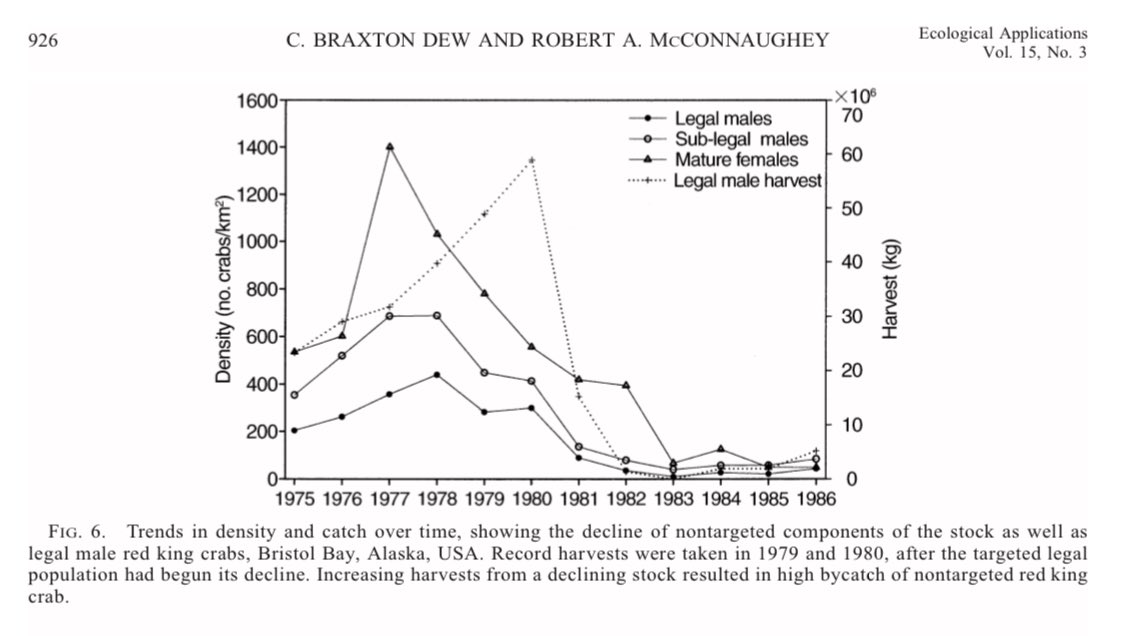
In 1959, Japan established a no-trawl zone protecting the breeding territory of king crabs in the Bering Sea. It was a success. Catches were increasing. But in 1976, everything changed when the US passed a law called the Magnuson-Stevens Fishery Conservation and Management Act.
The Magnuson–Stevens Act codified a management concept called Maximum Sustainable Yield, directing regulators to pursue maximum extraction of marine life. It also codified the concept of the Exclusive Economic Zone, extending 200 mi. from shore — effectively annexing the reserve.
Then, in 1980 — in the midst of the Cold War — the US and USSR joined forces to trawl the reserve, targeting sole. In a period of five years, bycatch of king crabs increased by more than 600%. King crab populations plummeted to single digit proportions.
apps-afsc.fisheries.noaa.gov/Publications/m…
apps-afsc.fisheries.noaa.gov/Publications/m…
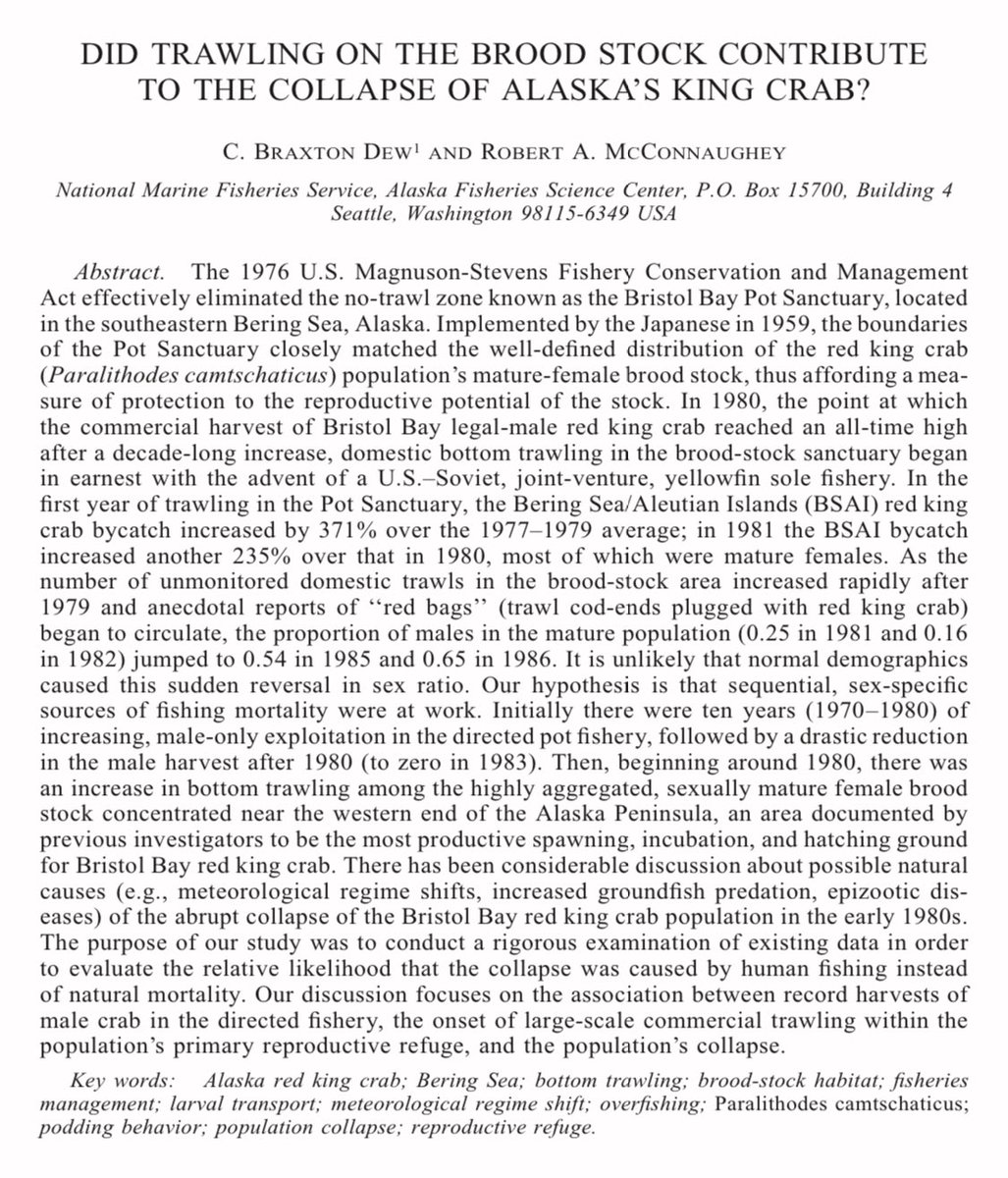
For decades, the US NOAA lied to the world about what happened to the crabs. In 2021, a whistleblower came forward, saying,
“Managers pushed the natural mortality story because they knew it might divert the focus from overfishing to natural catastrophe.”
peer.org/alaska-red-kin…
“Managers pushed the natural mortality story because they knew it might divert the focus from overfishing to natural catastrophe.”
peer.org/alaska-red-kin…
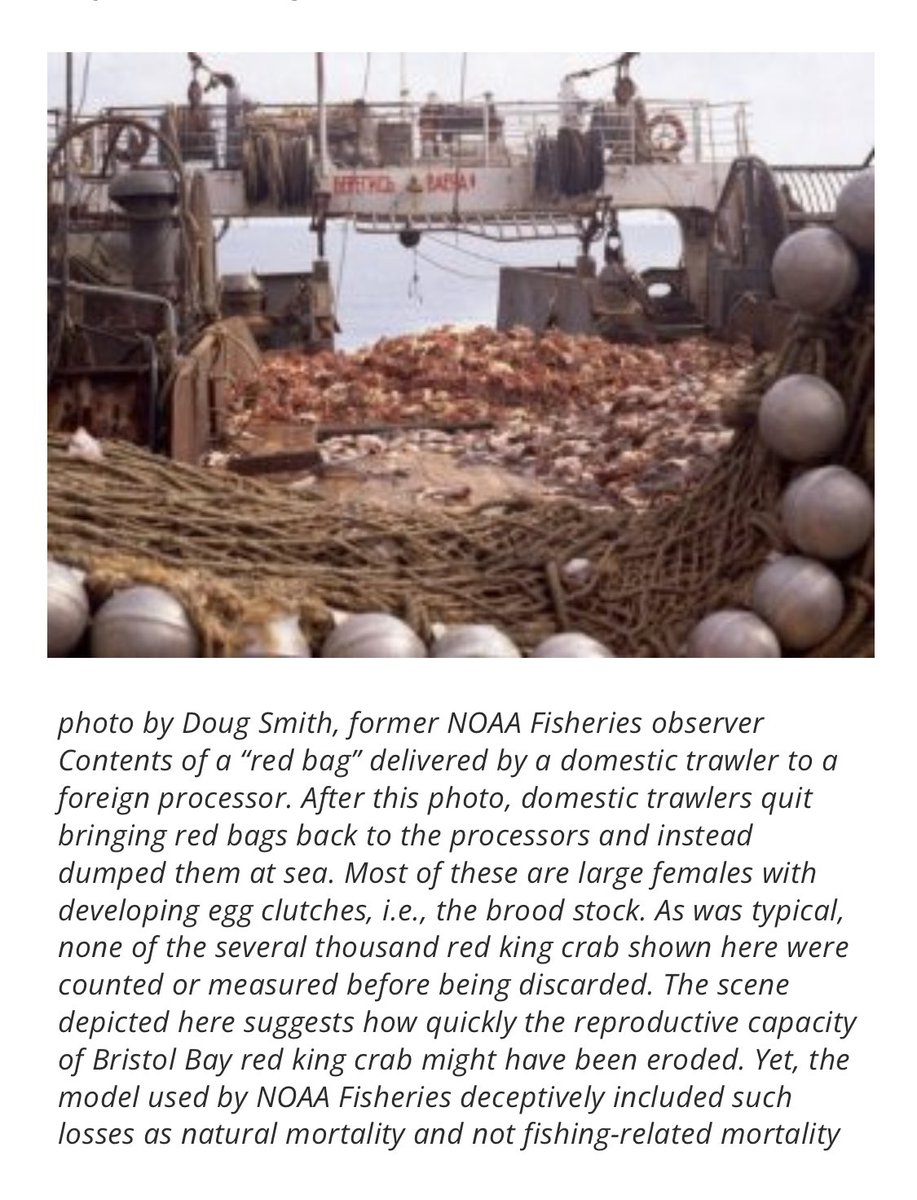
These words from the director of @PEERorg, the government employee transparency group who published the whistleblower testimony, should be considered in the context of the more recent snow crab collapse, described by NOAA and echoed by media as a mysterious natural phenomenon: 
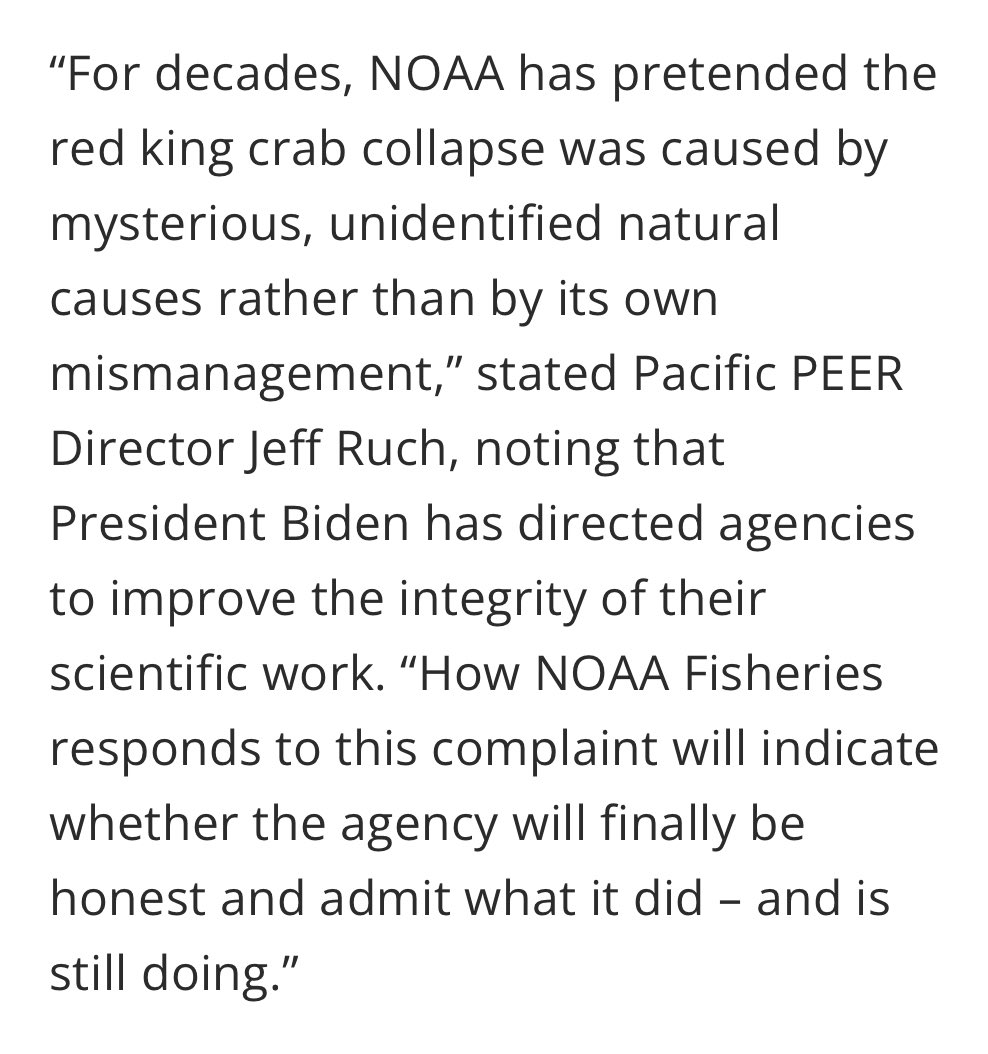
Many have linked the snow crab collapse to climatic contraction of the sea ice. But it doesn’t seem that warm water alone killed the crabs. Was it all predators? Disease?
Or is it possible the role of the fishing industry has been downplayed yet again?
nsidc.org/arcticseaicene…
Or is it possible the role of the fishing industry has been downplayed yet again?
nsidc.org/arcticseaicene…

Geotransmitter data compiled by @GlobalFishWatch indicate fishing vessels took advantage of the contracting sea ice. On the left is winter & spring fishing in 2013, a more normal ice year. On the right is the same season in 2020, during the sea ice lows.
globalfishingwatch.org/map/?latitude=…

globalfishingwatch.org/map/?latitude=…


When we dig further into the vessel logs, a striking pattern emerges: scores of ships trawling for hundreds of hours across the Northern reaches of the Eastern Bering Sea floor during critical breeding months in areas where snow crabs once could take shelter beneath the ice. 


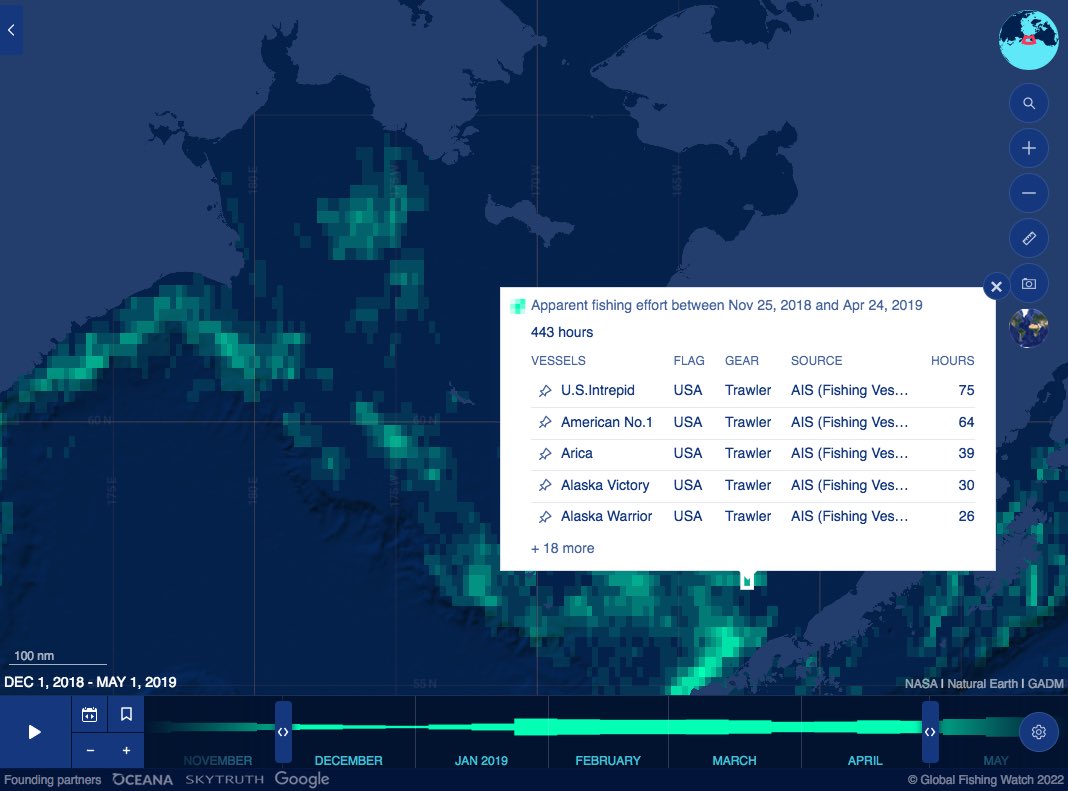
Corroborating the geospatial data, observer data from @NOAAFisheries stock assessments show a massive spike in snow crab fishing mortality correlating with the record low years for Bering Sea ice.
st.nmfs.noaa.gov/stocksmart?sto…

st.nmfs.noaa.gov/stocksmart?sto…

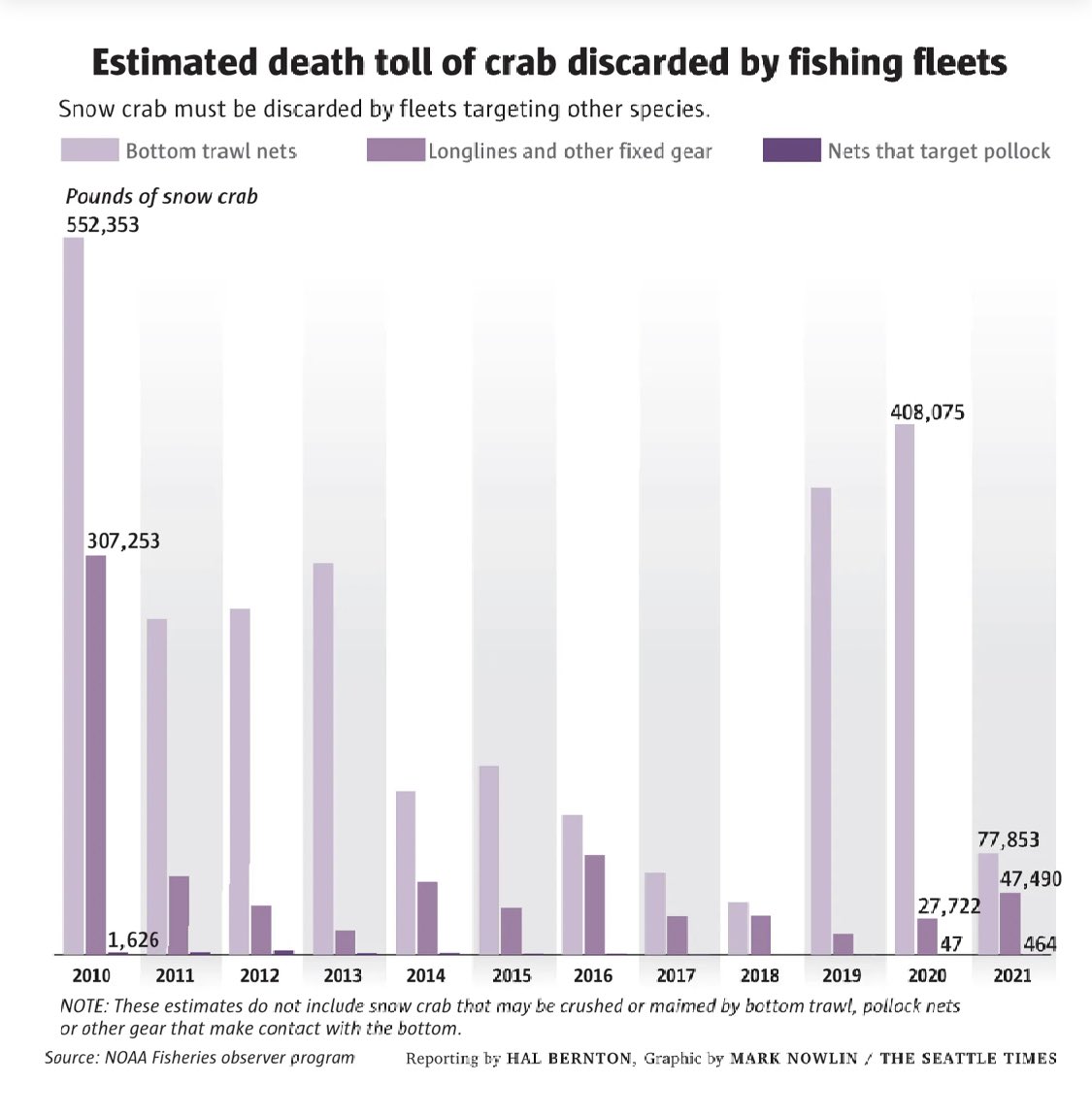
NOAA assures us trawl bycatch is a small contributor to total crab mortality, but observer data often underestimate collateral deaths, trawl bycatch is just one expression of increased fishing impact, & recall — they said the same thing about king crab.
seattletimes.com/seattle-news/e…
seattletimes.com/seattle-news/e…
Like in the 80s, a once protected habitat was exposed to fishing and in a few years, populations collapsed.
Can we chalk the crab calamity up to climate or are we letting fishing off the hook?
Did the fishing industry exploit climate change to raid the snow crab ice refuge?
Can we chalk the crab calamity up to climate or are we letting fishing off the hook?
Did the fishing industry exploit climate change to raid the snow crab ice refuge?

another corroborating piece of anecdotal evidence:
https://twitter.com/miketruchon/status/1581659628911222784
• • •
Missing some Tweet in this thread? You can try to
force a refresh

